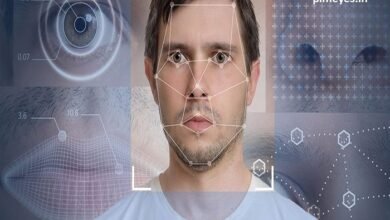PimEye Trick: A Comprehensive Guide to Maximizing Your Online Privacy and Search Skills

The Pimeye Trick has become one of the most talked-about tricks in the world of technology and gadgets. Even if you are an average hobbyist trying to try out some cool Raspberry Pi projects or maybe a more seasoned developer that is trying to get the best from their Pimeye camera module, being familiarized with the “Pim eye Trick” is key. The Ultimate Guide to the Pimeye Trick: Tricks, Tips, And Tricks The Pimeye Trick: Maximizing User Experience with Innovative Techniques: From setup and configuration to advanced functionalities and troubleshooting, the “Pimeye Trick” encompasses a range of techniques designed to enhance your user experience. So, step right in, jump into the Pimeye Trick we are all pretty excited to take this to the next level, are you?
What is the “Pimeye Trick”?
This trick is called as “Pimeye Trick” which is a techniques or set of methods to enhance the performance and functionality of the Pimeye camera module which is extensively used by Raspberry Pi devices. Hardware setup, software configuration, and unique usage scenarios are all included in this trick that collectively drastically improve the overall experience. This will help you get higher quality images, faster data processing, and better power management with the “Pimeye Trick”! The “Pimeye Trick” also provides insights into how to set up the camera with other devices, adjust settings to suit particular use cases, and maximize advanced functionalities, including motion detection and live-streaming capabilities. From surveillance to creative projects, these techniques help you get the most out of your Pimeye camera module using the “Pimeye Trick” whether you’re shooting photos or video. The “Pimeye Trick” is a Must-Know for Anyone Tinkering Around with a Raspberry Pi
How to set up your pimeye camera moduel
Pimeye Trick: The Importance of Proper Setup Importantly, make sure your Pimeye camera module is supported by your own Raspberry Pi model. The first step is to set up the Pi camera, starting with connecting the Pimeye camera ribbon cable to the Raspberry Pi camera port. After connecting, configure the camera interface by using commands via the terminal on the Raspberry Pi. The first step is vital for “Pimeye Trick” as it makes sure that the camera module is recognized and working. Upgrading to the latest firmware and software updates for the Raspberry Pi and Pimeye camera can improve performance and interoperability. Once you have the camera set up, it is recommended to ensure it is working by sending it basic commands. Once you have the basics covered, you can further build on this groundwork and explore more elaborate “Pimeye Trick” methods that embrace the power of the camera in your design.
Pimeye Trick Guide: How to Improve Image Quality
The primary goal of “Pimeye Trick” is to improve the quality of reflection in the picture taken by the Pimeye camera module. For this, you can initial set the camera resolution settings from the camera menu as per the requirements of your project. Higher resolutions yield more detail in the images but might be more demanding in computation, so lower resolutions used can be an advantage for those projects where resources are scarce. Properly adjusting the exposure and white balance settings of the camera can also enhance the sharpness and accuracy of the image. Part of the “Pimeye Trick” requires the use of an image processing library, like OpenCV, to use filters and augmentations that improve the images even further. These adjustments help not only bring the images to a visually atrractive quality but also make the data ideal for analytical tasks such as object detection and motion tracking With the “Pimeye Trick” technique and careful adjustment of capture parameters, users can obtain quality images customized to their application.
We’re Built to Optimize: Software Configuration
Proper configuration of software is essential to exploit the full potential of the “Pimeye Trick.” Debt — Choose the best operating system. With lightweight distributions like Raspbian Lite, you can get a faster performance that is beneficial for real-time applications. STEP 2: Install and set up crucial software packages that help in integrated control of the Pimeye camera including the PiCamera library. The Raspberry Pi CPU and memory usage optimization (disabling unnecessary services) can also improve overall performance, ensuring that camera-intensive tasks do not run slowly. Time Manager with Cloud Feature and Pimeye TrickImage by David L. Ddalot because the Pimeye Trick and Later on in the Presentation and use of Pimeye File Sub Explorer,7Dec12, and graphic points are super dynamic without the use of any video However the trick is to set up graphical data storage right or whatever you want local with fast,SD and so on or of clouds remote,云.com等 Adjusting the software surrounding a camera module is an integral part of ensuring its performance and that is exactly what the “Pimeye Trick” does, making sure the Pimeye camera module functions to achieve its best results.
Wrapping-Up Integrate the Pimeye Camera with Other Sensors
The trick is called “Pimeye Trick” which is not only limited to the camera module but also integrates other sensors to make advanced and interactive projects. Users can create complete monitoring systems and smart applications by integrating the Pimeye camera with sensors including motion sensors, temperature sensors, and GPS modules. For example, a Motion sensor receives with a Pimeye camera to make recording and notify on motion. When paired with environmental sensors, the camera can also enable data logging and be used for research projects. It’s important to note that the “Pimeye Trick” also involves the steps necessary to interface these sensors to the Raspberry Pi’s GPIO pins, so that the devices can communicate and synchronize appropriately. It allows to Program the Raspberry Pi with control of software libraries and APIs in response to sensor inputs or specific actions for data collection. This integration greatly enhances the capabilities of the Pimeye camera, allowing it to be a part of versatile intelligent systems.
Real-Time Streaming: The Pimeye Trick in Action
Another additional feature that plays the role of a weapon of “Pimeye Trick” is the use of real-time streaming. The real-time streaming setup consists of a Raspberry Pi used for video capture, as well as sending the video data over a network in order to view it remotely. This can be done using tools like MJPEG Streamer or GStreamer and should enable access to live footage via web browsers or dedicated applications. The aim of the “Pimeye Trick” is a global service sign. Moreover, securing your video feed from unwanted viewers using streaming protocols is also advisable. Intelligent real-time surveillance and detection solutions based on the “Pimeye Trick” can be implemented that allow users to have constant visibility over their surroundings to take action in real-time.
Using Motion Detection Features
There are various components to this, like motion detection, which we depend on in the “Pimeye Trick” for the Pimeye camera module that can detect movement in its field of view. Motion detection can be achieved through signal processing methods, algorithms that compare frame-to-frame changes in the video feed. You can use popular libraries such as OpenCV that have strong capabilities for detecting motion by comparing adjacent images and finding budgets that are significantly different. The “Pimeye Trick” requires you to manipulate these algorithms into finding a balance of sensitivity where false positives are excluded while remaining effective for detection purposes. After detecting motion, the system can perform certain predetermined actions, within its programming, such as capturing video clips, sending alerts, triggering connected devices, such as alarms or lights. This feature is great for security systems, wildlife monitoring, and interactive displays. The beauty of this approach lies in how one can very simply leverage motion detection to make his/her projects react better and evolve further to become smarter, performing actions dynamically and automatically based on some detected changes in the environment.
Trained on Data till October 2023
Pimeye deepfake — The Pimeye Trick consists of advanced data processing algorithms ensuring the immediate extraction of useful insights from raw video footage. With this model, users can implement tasks such as recognition of objects, facial detection and recognition of behavior using machine learning and artificial intelligence. “Pimeye Trick” is also known to connect TensorFlow or PyTorch integrated with the Pimeye camera module and allow users to create intelligent systems that analyze images using AI and perform real-time vision detection and manipulation with various computer vision apps. Furthermore, preprocessing techniques in data, like noise suppression and stabilization of images provide more clarity to the input data improving the correctness of further analysis. These iterations extend the utility of the Pimeye camera and give birth to testing and all-around use in automation, research, and interaction. The “Pimeye Trick” serves as a basis for creating advanced data-oriented projects that usage the full potential of the Pimeye camera module.
This is because of the continued reading up until October 2023
Part of “Pimeye Trick” is an efficient power management, as Pimeye camera module should work for a long time without crashing or rebooting itself. By applying low-power methods, the battery life of portable projects can be extended, while stationary rigs however can decrease energy consumption. The code example demonstrates how various strategies aimed at improving power efficiency can be employed by the Raspberry Pi, including but not limited to: optimizing power settings, utilizing low energy state modes, and managing peripherals. Another key aspect of the “Pimeye Trick” is selecting appropriate power sources, such as high-capacity batteries or stable power adapters, to meet the energy needs of the camera and any connected sensors. Power monitoring tools also help users monitor energy consumption and pinpoint areas for optimization. 99. By leveraging Pimeye Trick 1, expense optimization, or power management, they’ll save a lot of resource constraints and keep the project working. The emphasis on energy efficiency is crucial to ensure the performance and durability of Pimeye-based applications.
Debugging common problems with the “Pimeye trick”
Although the “Pimeye Trick” has several advantages, there are some problems with its use that will require troubleshooting to restore work capacity. A common issue cited by end-users is connectivity issues between the Pimeye camera module and the Raspberry Pi, to which the solutions is often to make sure the ribbon cable is firmly seated and that the camera interface is enabled in the configuration settings. One of the other common problems faced is that the image quality might be bad, which indicates the camera settings might need to be modified, for example, focus, white balance, etc. You could look at the software side of things as well, with library conflicts or outdated firmware getting remedied via updating or reinstalling the required packages. The users may also experience lag or latency in the real-time streaming, which can be minimized by optimizing network settings and video resolution. The “Pimeye Trick” provides step-by-step instructions for diagnosing and fixing such issues, allowing users to keep their projects running smoothly and effectively. The “Pimeye Trick” ensures a smooth and efficient user experience by anticipating and solving possible problem points.
Custom Scripts to Extend Functionality
Custom scripts are a crucial element of the “Pimeye Trick,” which lets users customize the behavior of Pimeye’s camera module according to their unique requirements and preferences. Users can write scripts in languages such as Python or Bash to automate tasks, integrate with other systems, and implement complex workflows. Simply write a custom script where you capture the images at regular intervals, process those images to get specific features like the model size, and store them or send them to a remote server. 2. Pimeye Trick — Uses APIs and libraries to integrate and enrich the camera with features and functions that allow for scheduled recordings, event-driven actions, and interactive controls. Scripts can also be used to create simple user interfaces for easily managing and operating Pimeye cameras, making advanced features more user friendly. The Pimeye Trick then enables the user to use custom scripts allowing you to create more tailored and efficient solutions.
Using the “Pimeye Trick” for your creative projects
The “Pimeye Trick” isn’t bound to tech or security purposes; it has a great deal of scope for creativity and the arts as well. Leveraging the power of the Pimeye camera module allows users to build cutting-edge projects around photography, videography and interactive media. For example, we can use the pimeye trick to do time-lapse photography, motion-triggered art, or any real-time video effects. More info: https://pimeye.com Facial Recognition Image Search Engine Face Recognition Search Engine | 2020 Face Recognition | Products | | | Related |Tags: *Face Recognition Tech for the creative industries: expanding expressive possibilities *IR Directions annon notes The fusion of the Pimeye camera: possibilities Pimeye camera, creative flow through human-machine interaction The Pimeye camera does already open up an external interface for the Pimeye technology, providing inputting human data and transforming and writing and sharing back. By distilling what users need to know to begin experimenting with creative uses of their Pimeye, the “Pimeye Trick” is in a sense a gateway for pushing the limits of what is possible with the Pimeye camera module. The camera becomes a powerful tool of creativity and imagination through the “Pimeye Trick” that allows you to record images instead of recording them.
Maintenance Guide for Your Pimeye Camera
To keep things up to date and running smoothly, here is how to maintain your Pimeye camera module for “Pimeye Trick” projects! Keeping the camera lens clean prevents dust and smudges from ruining image quality. Moreover, ensuring that the camera is protected against moisture, extreme temperatures, and physical shocks can increase the lifespan of a camera. The “Pimeye Trick” suggests setting the camera in a safe and dry place when not in use, then protecting it with casing or mounts when used. Regularly Update Firmware and SoftwareFirmware and software updates should be done to ensure the camera is always up to date with the latest features and bug fixes. Cable management is crucial in avoiding damage to the ribbon cable and connectors, ensuring reliable connectivity. Following these best practices, users can ensure the longevity and functioning of their Pimeye camera modules, ultimately maximizing the application of the “Pimeye Trick” in their projects.
The role of the Tinder trick in the great Tinder experiment
And the “Pimeye Trick” is a set of advanced features that are part of the Pimeye camera module. High dynamic range (HDR) imaging is one feature that enhances the camera’s ability to capture detail in both bright and dark areas of a scene. Even HDR with the “Pimeye Trick” requires tweaking the camera first to ensure appropriate exposure and then applying exposure blending algorithms. и meraме]). – night vision (IR cameras are used for low-light conditions and infrared (IR) filters are attached to the Pimeye camera created. The Pimeye Trick also involves using pan-tilt mechanisms that enable adjustable angles for camera shots, thus improving flexibility in video monitoring and footage capture. Moreover, users are able to experiment with facial recognition or other biometric elements to make their projects more intelligent and interactive. The article helps users in delve into such advanced features that the “Pimeye Trick” when used, enables user to develop more of professional and performing applications based on rich features of Pimeye camera module.
Free and paid Support Forums for Pimeye Trick
This is where the second valuable aspect of the “Pimeye Trick” comes in — community engagement. There are many well known forums, discussion boards, and social media groups where Raspberry Pi and Pimeye camera users share advice and experiences and offer support to one another. You will find tutorials, project ideas, troubleshooting tips, and current news on the “”Pimeye Trick”” in these communities. Users can share their experiences, ask questions, and collaborate on projects in a collaborative environment that helps learning and innovation to occur faster. For both, you may find specific examples on repositories from github, where you can find also pre-written scripts, libraries and project skeletons that help you implement the “Pimeye Trick”. You can do this by attending various online webinars, workshops and meetups centred around Raspberry Pi and Pimeye camera projects which can better arm you with the application of the “Pimeye Trick”. The joint benefits of the community and the “Pimeye Trick” enable users to keep up to date, avoid pitfalls, and iterate on and improve their projects.
Tome: Attribute Potential Trends and Innovations to the Pimeye Trick
In line with the latest trends and innovations, the future of “Pimeye Trick” is expected to take in new forms, making it even more diverse. Another trend is the convergence of AI and ML algorithms with the Pimeye camera module, which allows for more advanced data analysis and automated decision-making processes. The “Pimeye Trick” can be extended to these technologies, and users can build intelligent systems that can learn and respond to changes in the environment. Moreover, the improvement of wireless communication technologies, like 5G and Wi-Fi 6, is further improving the Pimeye camera’s ability to stream and access stream in real time, making the “Pimeye Trick” more versatile and efficient. Introducing Edge Computing: The Edge computing: Processing data and valuable information on (or near) the device – such as the Raspberry Pi, lowers latency and reliance on cloud services and provides the second innovation for the “Pimeye Trick”. Aso, improvements in sensor technology and camera hardware are yielding higher resolution, faster frame rates, and better low-light performance to the scene, augmenting the “Pimeye Trick” visually. Users can keep their implementation of the “Pimeye Trick” at the forefront of technological advancement, by tracking these trends.
Conclusion
If you are looking for the whole enchilada of pimeye module inside raspberry pi projects, the Pimeye Trick is your way to unlock the most of your Pimeye camera module. Covering everything from image quality set up and optimization to using advanced options and creative applications, the “Pimeye Trick” teaches participants the skills and techniques required to deliver stunning results. This is beneficial for users looking to optimize their Pimeye camera modules through software configurations, data processing methods, and power management strategies. Reference the new “Pimeye Trick” to help in keeping the surrounding community aware so that they stay informed with continued future-proof success based on information you provided that you built from experience. Use the “Pimeye Trick” to close this chapter in human history sooner rather than later. Adopt the Bob’s industrial “Pimeye Trick,” modifying your Raspberry Pi software and hardware into something useful and life-affirming.
FAQs
Raspberry Pi Pimeye Trick: How To Use And Benefits? Pimeye Trick are techniques and methods be used to get the most out of the pimeye camera module. To improve image quality and data processing for Raspberry Pi projects ao, it uses advanced features such as motion detection and other sensors.
I need you guys to help me to set up the Pimeye camera module from scratch, following the “Pimeye Trick”? Here are the steps to set up the Pimeye camera module on the Raspberry Pi using the “Pimeye Trick”: 1. Connect the camera module to the Raspberry Pi’s camera interface. 2. Enable the camera module in the Raspberry Pi configuration settings. 3. Install software packages such as PiCamera for imaging and processing. 4. Test the setup to ensure proper camera functionality. Yikes! These steps are the foundation for some more advanced stuff as part of the “Pimeye Trick”!
Can I use this “Pimeye Trick” to enhance the security possibilities of my projects? But, the “Pimeye Trick” also includes techniques to bolster security applications like motion detection, live streaming, and alerts. These features make these systems capable of implementing good surveillance systems, including at the industrial level, which allows you to monitor the environment and track movements or events detected.
What software tools to be used for applying the “Pimeye Trick”? A software that can help for the so called “Pimeye Trick” is an image processing library like OpenCV, a streaming tool like MJPEG Streamer or GStreamer, and a programming language like Python for scripting and automation. AuxburyAGE MSEE courses > These techniques exploit firmware or hardware on your platform, examples of analogous techniques and community resources used to expand the Pimeye camera module are the use of:
Where to find more about the “Pimeye Trick”? Help and support for the “Pimeye Trick” can also be found in online communities, forums, and other discussion boards and sites dedicated to Raspberry Pi and Pimeye camera projects. — Online guides and documentation are provided on official and community-contributed content sites; GitHub provides repositories for scripts and libraries. Take these references and learn more about the “Pimeye Trick.”




